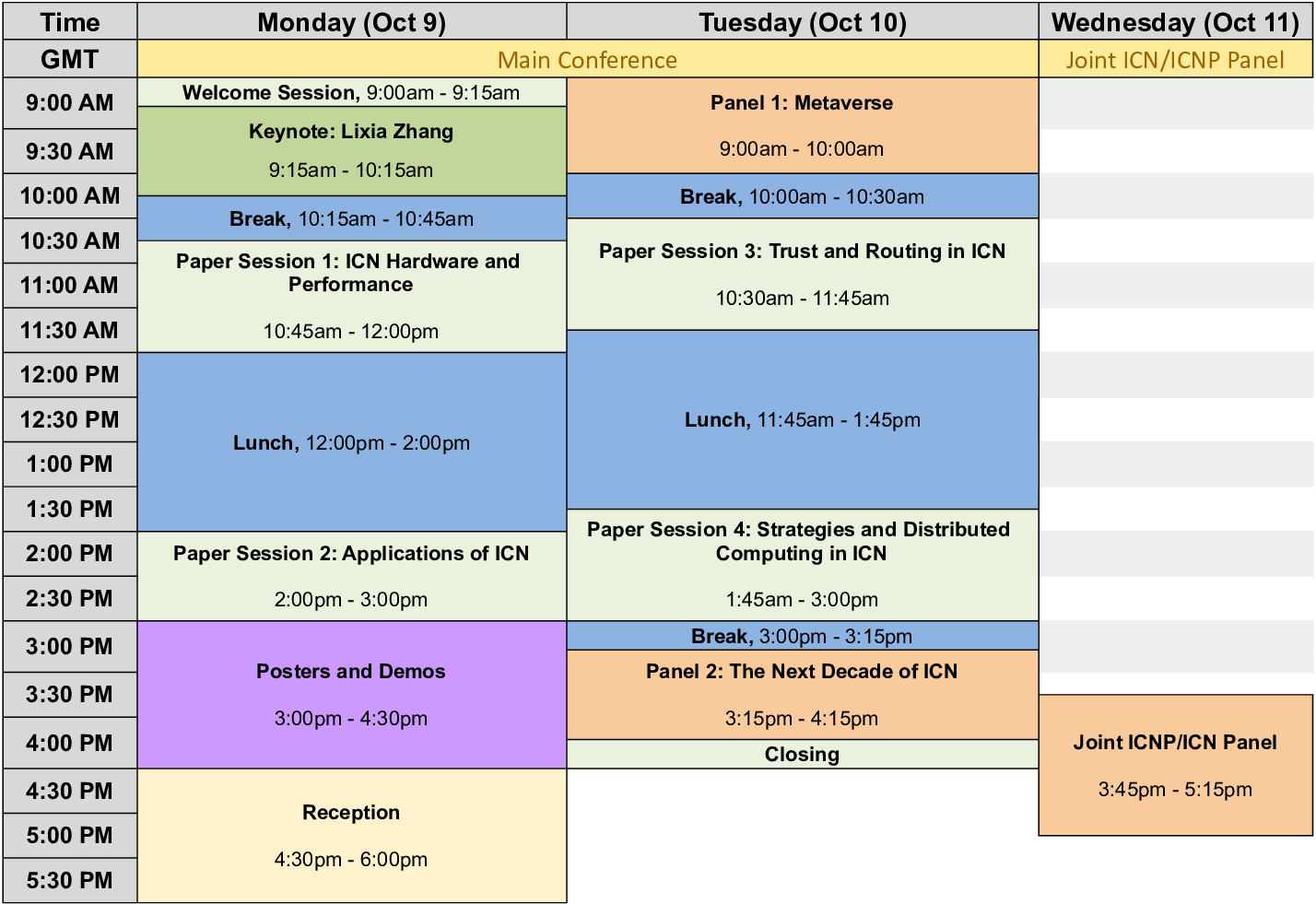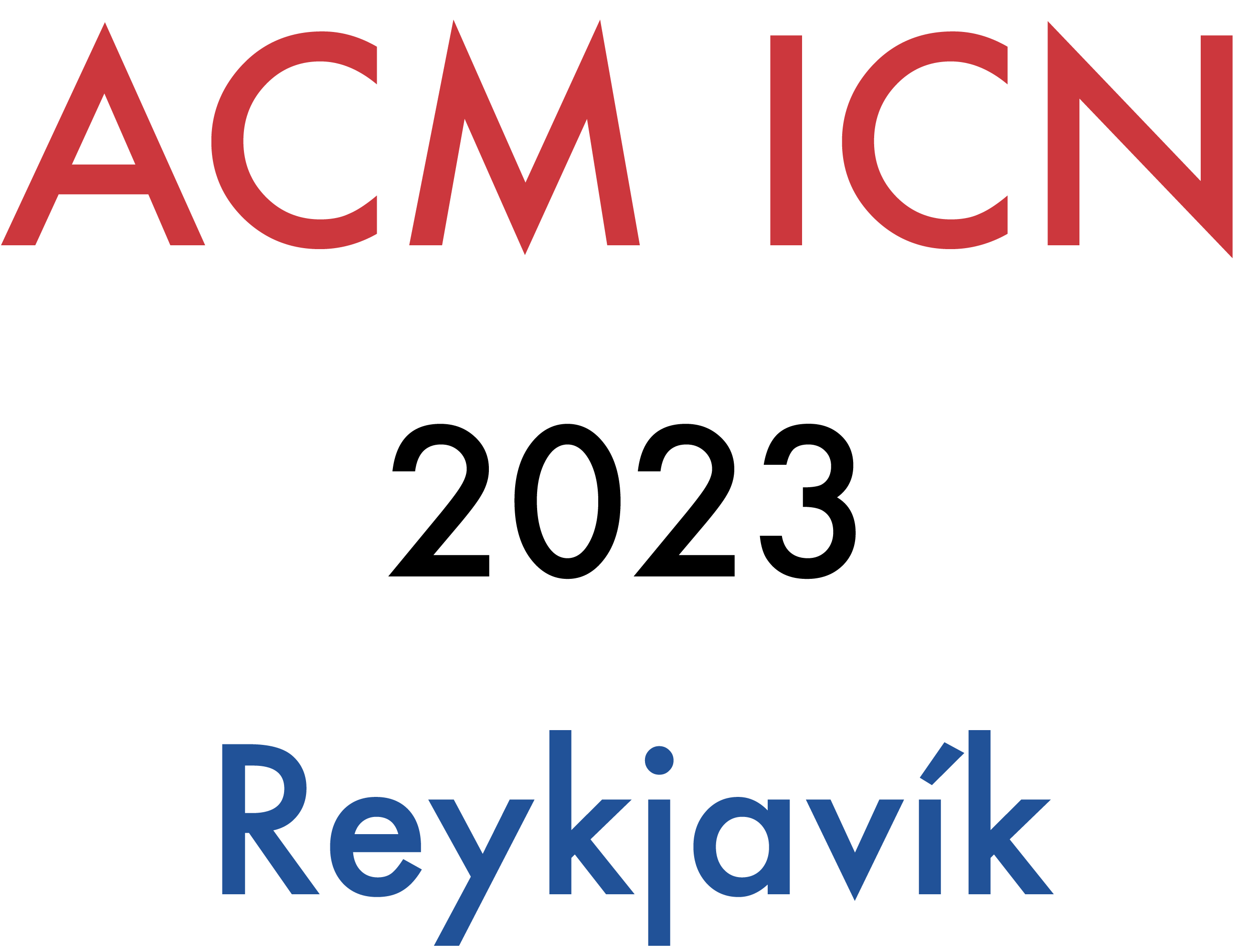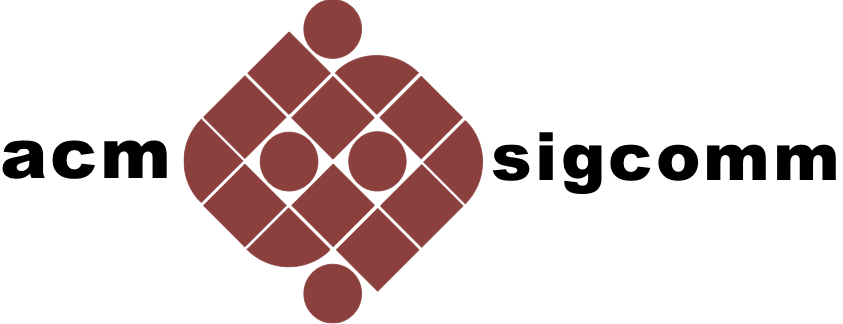10th ACM Conference on Information-Centric Networking (ICN 2023)
Conference Program
Conference Schedule at a Glance

Schedule
- Welcome Session
-
Developing a new internet architecture: Lessons learned
Lixia Zhang
- Break
- Session 1: ICN Hardware and Performance
-
CCNx Router on FPGA Accelerator Achieving Predictable Performance
Atsushi Ooka and Hitoshi Asaeda (National Institute of Information and Communications Technology (NICT))
-
Abstract:
Information-centric networking (ICN) is a prominent architecture that realizes content-aware network services through name-based communications. A programmable ICN router implemented on a field-programmable gate array (FPGA) accelerator can achieve predictable performance for advanced service requirements, such as low latency and high throughput. However, owing to the tight resource constraints, implementing ICN functions on an FPGA is a huge challenge, as ICN requires frequent update tables for maintaining long and variable-length content names and access to caching devices capable of storing large-volume content. In this study, we designed and implemented an FPGA router that incorporates an ICN by applying the CCNx v.1.0 protocol specification. The FPGA router implemented a unified status table on a large-capacity DRAM that stored 10 million variable-length content name prefixes. Additionally, we introduced a DRAM bank allocation that is unaffected by slow random accesses and reduces table access latency, and a Row–Bank–Column memory address mapping scheme that reduces the access time to heavily loaded in-network cache storage. We present the evaluation results of the proposed architecture implemented on the NetFPGA-SUME board, revealing 10 Gbps or 2.8 Mpps throughput and ≤ 300 ns jitter.
-
-
Pegasus: A High-Speed NDN Router with Programmable Switches and Server Clusters
Xingguo Long (Institute of Computing Technology, Chinese Academy of Sciences, Peng Cheng Laboratory, University of Chinese Academy of Sciences), Kun Huang, Rongwei Yang, and Qingguo Dai (Peng Cheng Laboratory), and Zhenyu Li (Institute of Computing Technology, Chinese Academy of Sciences)
-
Abstract:
Programmable switches provide a solution for implementing high-performance Named Data Networking (NDN) routing systems. However, the challenge arises from the packets in the NDN network that carry hierarchical names of varying lengths, coupled with the inherent limitation of programmable switches in parsing variable-length packet content and storing large NDN routing tables. Therefore, deploying NDN routers based on programmable switches in NDN networks remains a formidable task. To address this issue, we implement a parser that supports variable-length names in a programmable switch, and combine the switch with a commodity server cluster to realize a high-speed NDN routing system capable of simultaneous processing names with different lengths at line rate. In this paper, we introduce the design of our routing system in programmable switches and commodity servers, and experimentally verify it can be scaled to Tbps-scale.
-
-
P4-based NDN Tester for Evaluating Forwarder Performance under Non-Uniform Request Patterns
Junji Takemasa (Osaka Univeristy) and Yuki Koizumi and Toru Hasegawa (Osaka University)
-
Abstract:
The implementation of high-speed Named Networking (NDN) /Content Centric Networking (CCN) forwarders has been a hot research issue over the last decade. Many full-fledged software-based forwarders are implemented toward 100 Gbps throughput, and recently, prototypes of some hardware-based forwarders using a P4 switch are being implemented toward more than 1 Tbps throughput. Many studies press stress on NDN forwarders with uniform request patterns. However, such request patterns only allow the maximum throughput to be measured. On the contrary, this paper addresses the generation of non-uniform request patterns at the rate of Tbps to evaluate the throughput of NDN forwarders.
-
- Lunch
- Session 2: Applications of ICN
-
Mnemosyne: Distributed Application Logging over Named Data Networking
Siqi Liu and Lixia Zhang (UCLA)
-
Abstract:
Logging is crucial for auditing the function and securities of the applications. We designed Mnemosyne, a distributed logger running over Named Data Networking(NDN), to address this need for NDN-based distributed applications. Mnemosyne assures the immutability of logged events by interlocking all event records in a DAG-based blockchain. Mnemosyne provides a high logging throughput and system resiliency against network component failures. We implemented Mnemosyne’s DAG and interface and evaluated our design through an emulated and deployment setting.
-
-
PCLive: Bringing Named Data Networking to Internet Livestreaming
Teng Liang, Wei Huang, Xinyu Ma, Weizhe Zhang, and Yu Zhang (Peng Cheng Laboratory) and Beichuan Zhang (The University of Arizona)
-
Abstract:
The lack of application support is probably the biggest obstacle to ICN/NDN deployment. One approach to tackle this problem is to NDNizing existing applications by translating between application-level protocols and NDN, which can benefit from NDN’s architectural advantages while minimizing development efforts needed. In this paper, we validate the effectiveness of this approach by applying it to Internet livestreaming, and develop PCLive, a livestreaming system with NDN embedded as its distribution network. PCLive makes minimal changes to an Internet livestreaming architecture, achieving the maximum compatibility with existing components including video players, OBS, and video transcoders. By solving a number of design issues such as HLS/NDN protocol translation, data translation, naming and security, PCLive is able to run over NDN network and enjoy its architectural benefits. Since December 2021, PCLive has been running on an NDN testbed consisting of cloud servers from seven cities. It can serve almost four times as many clients as an existing livestreaming system can over IP under the same network conditions; at the same time, the average throughput of the bottleneck link in the NDN testbed is 34.8% lower than that in IP. We also evaluate congestion control and adaptive forwarding with PCLive.
-
- Poster/Demo Session
-
Varun Patil, Seiji Otsu, and Lixia Zhang (UCLA)
-
Abstract:
State Vector Sync (SVS) is a Distributed Dataset Synchronization (Sync) protocol designed to support distributed applications running over NDN. The design of SVS has two unique features that set it apart from all the previous Sync protocol designs. First, SVS encodes the raw information of data namespace to be synchronized in its Sync Interest packets. Second, and related, it uses Sync Interests as notifications which do not solicit data replies. To reveal insights of how its unique design features enable SVS to outperform its counterparts, we describe the operation of two types of timers used in SVS and their effectiveness in minimizing protocol overhead while keeping synchronization delay low.
-
-
Decentralized Photo Sharing via Named Data Networking
Varun Patil, Tianyuan Yu, Xinyu Ma, and Lixia Zhang (UCLA)
-
Abstract:
The semantic naming and data-centric security paradigm of Named Data Networking opens up new possibilities for building decentralized applications. In this poster, we briefly identify some factors that lead to today’s centralization and non-interoperability of cloud services. We present the preliminary design of a photo sharing application as a simple example to articulate how NDN can overcome the lack of cloud-independent user identities, illustrating the process and considerations involved in designing decentralized applications that can provide the features offered by existing cloud services.
-
-
Mitigating Intermittent Links With Name-Based Networking
Behrooz Farkiani, John DeHart, Jyoti Parwatikar, and Patrick Crowley (Washington University in St. Louis)
-
Abstract:
We present a name-based sidecar-assisted networking approach that enables off-the-shelf TCP/IP and HTTP protocols to effectively handle network disruptions. We compare the performance of our approach with the Name Data Networking by deploying and testing them in a hardware networking testbed and show, on average, in 85% of experiments, the sidecar approach manages to transfer data.
-
-
Security and Performance Characteristics of QUIC and HTTP/3
Fan Liu and Patrick Crowley (Washington University in St. Louis)
-
Abstract:
We focus on the security and performance characteristics of the QUIC protocol, exploring its security qualitatively and its performance quantitatively through experimentation. Performance comparisons between QUIC and traditional TCP-based counterparts were made through experiments under various dimensions. These comparisons were based on measurements of running code on real computing and networking resources within Washington University’s Open Network Lab (ONL). The experimental results show that QUIC clients perform as well as or better than TCP clients for single-stream resources with limited bandwidth. However, minimal performance differences exist between QUIC and TCP for multiple streams.
-
-
Sirapop Theeranantachai (UCLA), Beichuan Zhang (University of Arizona), and Lixia Zhang (UCLA)
-
Abstract:
A unique characteristic of LEO satellite networks (satnet) is their dynamic connectivity changes at high frequency, which brings a challenge to Named Data Networking (NDN). As a data-centric network architecture, NDN uses in-network states to steer requested data packets back to consumers. The dynamic connectivity changes of LEO satnets can disrupt the states of NDN’s forwarding plane, raising the question of whether NDN could run on LEO satnets. In this poster, we graphically illustrate how NDN’s stateful forwarding enables multicast data delivery and detects forwarding loops; and how the Content Store (CS) at NDN nodes enables fast recovery of lost data packets and fast delivery for future requests for the same data. We argue that the PIT and CS designed into the NDN forwarding plane can greatly improve a LEO satnet’s data delivery performance. Therefore we must develop effective solutions to maintain NDN’s stateful forwarding plane in the face of frequent dynamic connectivity changes.
-
- Reception
- Panel 1
-
Panel: Where does the Web go from here? “The Metaverse” an Information-Centric Network
Abstract: “Metaverse” is a placeholder name for a range of new technologies and experiences, for example enabling the concept of a shared, interoperable, and persistent XR. Some descriptions and early prototypes for social AR/VR systems suggest leveraging existing Internet and Web protocols to provide Metaverse services, without addressing the technical complexity and centralization of control required to provide the underlying cloud service infrastructure. This panel will discuss problems and possible alternative design options for the Metaverse. For example, assuming a fundamentally information/centric system in which most applications participate in granular 3D content exchange, context-aware integration with the physical world, and other Metaverse-relevant services. Moreover, can "the Metaverse" be conceived as an information-centric concept that likely will become synonymous with the network itself? What new opportunities would the reciprocal design of the network and applications open for the deployment of Metaverse-suggestive experiences – and for the evolution of Information-Centric Networking?
Panelists:
Giuseppe Fioccola, Dirk Kutscher, Alex Afanasyev
Moderator: Jeff Burke - Virtual Food Break
- Session 3: Trust and Routing in ICN
-
A New API in Support of NDN Trust Schema
Tianyuan Yu and Xinyu Ma (UCLA), Hongcheng Xie (City University of Hong Kong), Yekta Kocaoğullar (Sabancı University, Istanbul), and Lixia Zhang (UCLA)
-
Abstract:
The decade-long experiences from developing applications over Named Data Networking (NDN) have taught us the importance of well-designed libraries that offer support to application developers for data security. While trust schema provides a critical component in NDN security support, its implementation and support only started receiving significant attention recently. This paper first provides a summary of the previous API support for trust schema, and then takes a step forward by introducing Envelope as a new trust schema API. Envelope addresses the application requirements by offering comprehensive trust schema functionalities, an easy-to-write schema language, and an extensible design. To demonstrate the usefulness of Envelope, we develop a blog application which makes use of the our new API. Our results indicate that Envelope provides effective trust schema support for applications with acceptable overhead.
-
-
SoK: On Named Content and Inter-domain Routing
Jeremiah S. Davis and Ken Calvert (University of Kentucky)
-
Abstract:
The ability to ensure trustworthiness of application data may be the strongest advantage of the paradigm exemplified by NCN (Named-Content Networking, by which refer to the paradigm used in Named Data Networking and CCNx). The use of structured, semantically meaningful names to identify data objects, together with cryptographic signatures as proof of origin authenticity, provides a uniform mechanism for defining and verifying trustworthiness, while allowing the underlying trust relationships to vary with the application.
Meanwhile, inter-domain routing (IDR) remains a well-known challenge, both for the current Internet and for NCN. Motivated by the observation that IDR threats in the current Internet are of the type NCN is good at addressing, we consider IDR as an application of NCN. We survey and analyze nine prior proposals related to IDR in information-centric networking to understand the design space, and evaluate them with respect to a set of criteria relevant to secure IDR for NCN. Then we sketch a general framework for IDR, and outline how it can be can be instantiated to support some common use cases for global NCN service.
-
-
Investigating the Synergy between Routing and Forwarding Strategy in NDN Networks
Lan Wang and Alexander Lane (University of Memphis), Constantin Serban and Jesse Elwell (Peraton Labs), Alex Afanasyev (Florida International University), and Lixia Zhang (UCLA)
-
Abstract:
Multiple routing protocols and forwarding strategies have been proposed for NDN, but there is a lack of understanding on the synergy between routing and forwarding strategy. In this work, we conduct an investigation into the effectiveness of NDN forwarding strategy, routing, and the combination of the two in maximizing data fetching successes in face of network failures. Through emulation experiments with various network scenarios, we evaluate the ASF forwarding strategy and NLSR routing protocol both independently and jointly. We assess the impact of different network conditions on their effectiveness, reveal the performance tradeoffs made by NLSR and ASF, and provide insights into the design and deployment of routing and forwarding strategies in NDN networks.
-
- Lunch
- Session 4: Strategies and Distributed Computing in ICN
-
Reining in Redundant Traffic through Adaptive Duplicate Suppression in Multi-Access NDN Networks
Saurab Dulal (The University of Memphis) and Lan wang (University of Memphis)
-
Abstract:
Named Data Networking (NDN) provides native support for multi-party communication. However, the current NDN forwarder lacks a duplicate suppression mechanism for multicasting in a multi-access network, which can cause network congestion and significantly degrade the overall packet delivery performance. In this paper, we propose Adaptive Duplicate Suppression (ADS) for one-hop multicasting in multi-access NDN networks. ADS uses the duplicate count per Interest and Data name observed in the network to continuously adjust the suppression time a node waits before forwarding a packet. We have implemented ADS in the NDN forwarding daemon (NFD) and evaluated it using Mini-NDN. Our evaluation shows that ADS can reduce redundant network traffic significantly in different network conditions, resulting in much higher application goodput and lower transfer time
-
-
SoK: Distributed Computing in ICN
Wei Geng and Yulong Zhang (The Hong Kong University of Science and Technology (Guangzhou)), Dirk Kutscher (Hong Kong University of Science and Technology), Abhishek Kumar (Center for Ubiquitous Computing, University of Oulu), Sasu Tarkoma (University of Helsinki and University of Oulu), and Pan Hui (Hong Kong University of Science and Technology)
-
Abstract:
Information-Centric Networking (ICN) with its data-oriented operation and generally more powerful forwarding layer provides an attractive platform for distributed computing. This paper provides a systematic overview and categorization of different distributed computing approaches in ICN encompassing fundamental design principles, frameworks and orchestration, protocols, enablers, and applications. We discuss current pain paints in legacy distributed computing, attractive ICN features and how different systems make us of them. This paper also provides a discussion of potential future work for distributed computing.
-
-
Capture and Analysis of Traffic Traces on a Wide-Area NDN Testbed
Sankalpa Timilsina (Tennessee Technological University), Davide Pesavento and Junxiao Shi (NIST), Susmit Shannigrahi (Tennessee Technological University), and Lotfi Benmohamed (NIST)
-
Abstract:
High-quality network traffic measurements from realistic network deployments are needed to analyze and better understand emerging network technologies for the purpose of maturing them. However, achieving this measurement goal for the Named Data Networking (NDN) technology remains a challenge mainly due to the lack of real-world deployments. To address this gap, we have created a dataset of NDN traffic traces and a software toolkit for capturing, analyzing, and replaying these traces. Our dataset, derived from real-world NDN routers on the NDN testbed, is the first non-synthetic dataset publicly available to the research community. This paper presents the dataset and the tools, discusses its properties, and shares insights applicable to other NDN research.
-
- Break
- Panel 2
-
Panel: ICN's Next Ten Years
Abstract: On the occasion of the 10-year anniversary of the ACM ICN conference, the panel will consider what the next ten years might hold for research & development in information-centric networking. The panelists represent a variety of professional and personal perspectives, and we can expect a vigorous discussion and exchange of views. The panel will begin with brief prepared comments from each panelist, followed by audience Q&A.
Panelists:
Jörg Ott, Marc Mosko, Lan Wang
Moderator: Patrick Crowley -
Closing
- Joint ICNP/ICN Panel
-
Panel: Network Abstractions for Continuous Innovation – What do We Need?
Abstract: TBDSince the Internet's initial rollout ~40 years ago, not only its global connectivity has brought fundamental changes to society and daily life, but its protocol suite and implementations have also gone through many iterations of changes, with SDN, NFV, and programmability among other changes over the last decade. This panel looks into next decade of network research by asking a set of questions regarding where lies the future direction to enable continued innovations, including, but not limited to, the following:
- How should the defining characteristics of a network protocol evolve in the era of increasing automation in the construction of systems and the focus on programming/computing? Should, or should not, communication remain as a fundamental construct?
- What should be the abstraction(s) for future network service?
- Are distributed protocols something in the past, or still needed in the future? And,
- Network education in 2040: What will we teach?Panelists:
Ken Calvert, Jim Kurose, Dirk Kutscher, Lixia Zhang
Moderator: David Oran







